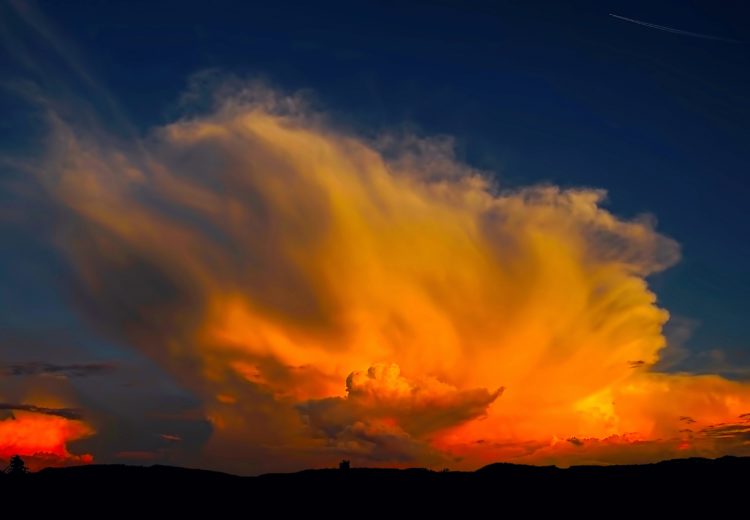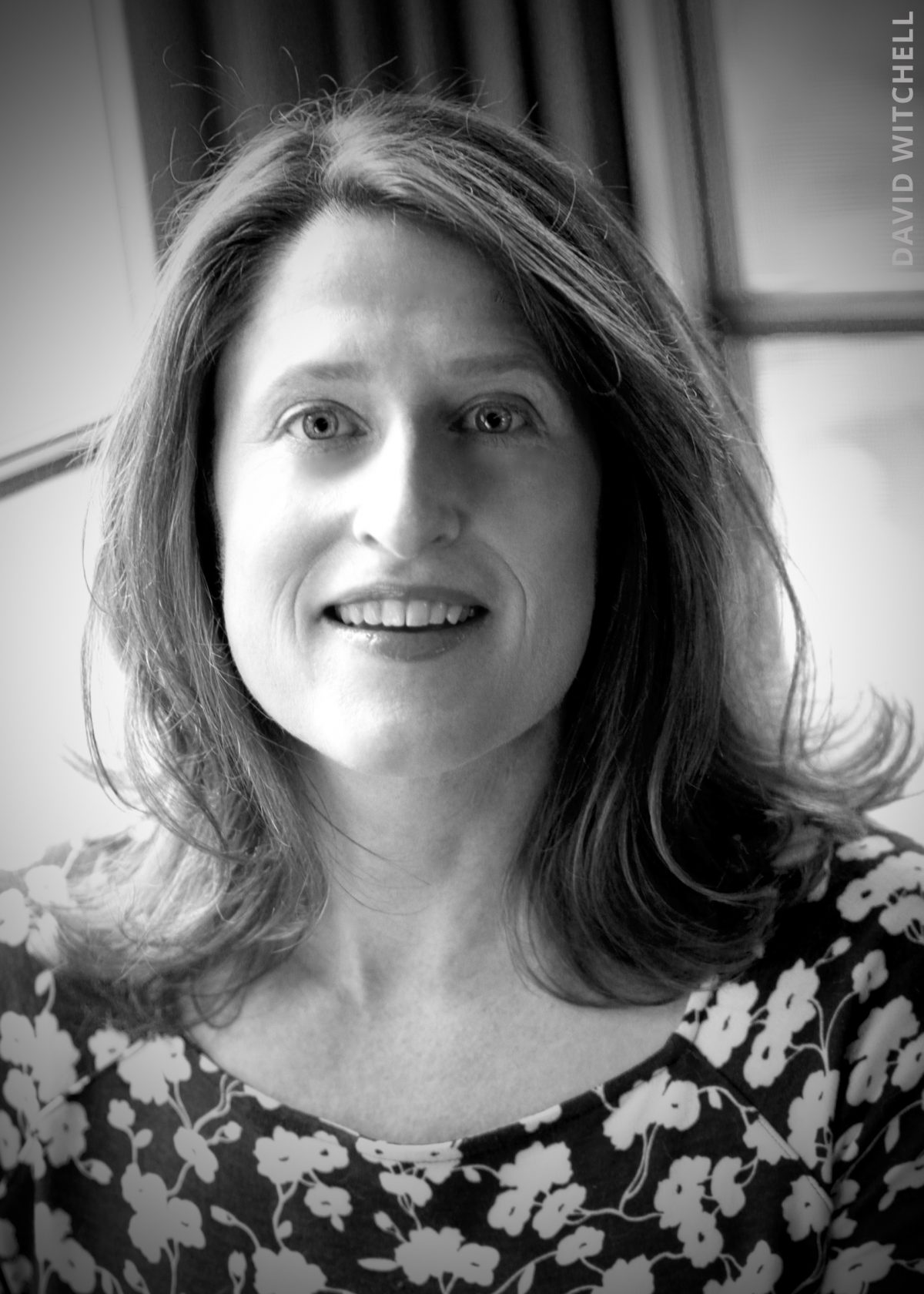
- Examine closely.
- Connect with people.
- Don’t rush.
To see those principles come to life, we analyzed a single project from a member of Howard’s narrative team. “The Cloudspotters’ Guide to Climate Change,” by Mari Saito, also provides some insight to the challenges of covering a subject that garners responses that veer from apocalyptic to indifferent. In this case, How do you seduce crisis-fatigued readers into reading yet more sobering news about what is threatened or on the brink of being lost forever?
If you are Saito, working with Howard’s guiding ideas, you might begin with innocence — in this case — a grassy path and a stray lamb.
You invoke pleasing scenery, such as a gothic tower topped with a flag.
And then clarify: You’re visiting a place with “no paved roads, hardly any cars.”
Next, reveal: Lundy Island, 11 miles off the coast of England, was once a pirate hideaway. But assure readers you’re in good company, embedded with a bunch of cloud lovers, steeped in a setting “lifted straight out of a children’s book about a summer adventure in a world without care.”
As a guide to this mysterious world, you might select a woman of the cloth, Reverend Skinner, to be the first person portrayed in your story. Imply that her bearing is cloud-like without being explicit. Describe the way her “sturdy sandals peek… out from underneath her white robes.” Capture the question she floats to those gathered before her: “Majestic or wispy, solid yet ephemeral. Who could conceive of clouds?”
Along the way, you strive to make readers think they, too, have taken a vacation from hard news. But you deliver that news nonetheless.
Here’s a deeper look at how Saito uses her editor’s guiding principles to produce a delicate and engaging narrative that still manages to create an indelible impression:
Examine Closely
Saito chronicles a long weekend spent with a small group of Cloud Appreciation Society members. Through gentle pacing we learn that the Society’s founder, Gavin Pretor-Pinney, intends the Lundy getaway as, “A weekend devoted to not taking for granted something that is around you all the time.” And courtesy of the charming scenery combined with serious science — this is exactly what transpires.
As Saito, a Reuter’s correspondent based in Tokyo, asserts, the act of cloud appreciation is itself expansive, contemplative. It’s a long step away from “TV shows looping through story after story of calamity and division.”
And yet, even as the group settles into a place that apparently escaped the 21st century — the “windswept island” is kept functioning by sometimes overtaxed generator — Saito hints at all there is to lose in an era of human-caused environmental change, an age now referred to as the Anthropocene.
Her spare observation of the sky doubles as a subtle thesis: “Thin feathers of clouds float high above, providing little shelter from the sun.”
Connect with People
At the outset, Saito lets us know the island-bound members of the Cloud Appreciation Society, a 15-year-old organization which boasts a worldwide membership of 47,000, will consider whether the organization should add climate crisis activism to its otherwise simple mission: “To bring people together who love the sky.”
As the Rev. Skinner explains to a newcomer, the current membership is broad, encompassing those with “extraordinary scientific knowledge and others who send in a photo from Australia saying, ‘Look, that’s a dog chasing a rabbit.’”
As the weekend drifts along, Saito introduces us to Carolyn Byrne, a Manhattan divorce attorney, who finds herself reacquainted with the carefree girl she used to be beneath the island’s wide sky. As “the tiny bars of signal on [Byrne’s] iPhone disappear,” Saito captures scenes of Byrne practicing the flute from atop the island’s lighthouse and conveys her experience of cloudspotting as “discovering that feels more like remembering.”
Saito also will introduce us to Taipo Schneider, a climate scientist in a lab halfway around the world at the California Institute of Technology, whose recently published findings based on his studies of stratocumulus clouds inspired dire headlines such as, “Climate change is eliminating clouds. Without them, Earth burns.”
Throughout, Saito’s reporting toggles between the easy beauty of Lundy, where landscape painter Lionel Playford is “mixing watercolor paints on a white enamel palette” in preparation to capture “the character of clouds” and then to the Cal Tech researchers who “posit that the dispersal of the stratocumulus will add some 8 degrees Celsius to the Earth’s temperature.”
In an age where clouds are frequently thought of as vessels for storing computer data, Saito offers refreshing clarification: Clouds are “vast assemblies of miniscule water droplets and ice crystals that cling to dust and are suspended in air.”
In prose that also floats gracefully, she informs us, “Out of the many clouds that help regulate the Earth’s climate, the stratocumulus, those low-lying, grayish-white clouds that are often mistaken for rain clouds, are especially significant. They cover around 20 percent of the tropical ocean, cooling the planet by reflecting sunlight back toward the atmosphere.”
So what hangs in the balance if scientists’ cloud model predictions prove accurate? Saito also speaks to Bjorn Stevens, a director at the Max Planck Institute for Meteorology in Hamburg and a leading author of the IPCC’s chapter on clouds. He explains, “The biggest effect of clouds is to block sunlight, but as the world warms, we expect to have clouds change in a way that they effectively block less sunlight so the planet warms even more, but how strong this effect is remains uncertain.”
Despite ominous findings, Saito’s story wields a light touch, even as she places the society’s own literature — “Life would be dull if we had to look up at cloudless monotony day by day.” — near the scientists’ findings: “If emissions continue…stratocumulus cease by the end of the century.”
Don’t Rush
Saito’s most evocative passages come at the finale as the Cloud Appreciators prepare to leave and a new posse of visitors arrives.
Here Saito’s reporting allows for details such as the “soft wind ruffling the tops of the long grass and the children playing tag in a field next to the pub.” When Rev. Skinner pronounces, “It’s hard to see something so beautiful and transient disappear,” Saito pushes the expression’s poignancy, adding that it’s unclear “if she means the clouds or something more.”
And whereas Saito could have returned us to the “real world” — concluding with a scientist’s final concern or a cloudspotter’s anxiety for the threatened persistence of clouds amid the place once traversed by Reuter’s news pigeons — instead we’re left with a more nebulous moment: When a newcomer first learns of the group’s name and purpose, his initial reaction is to interrogate: “What constitutes [appreciation?] would you say?”
Saito leaves this unanswered, and thus the possible explanations subtly drift from the society’s purview to those of a reader’s.


